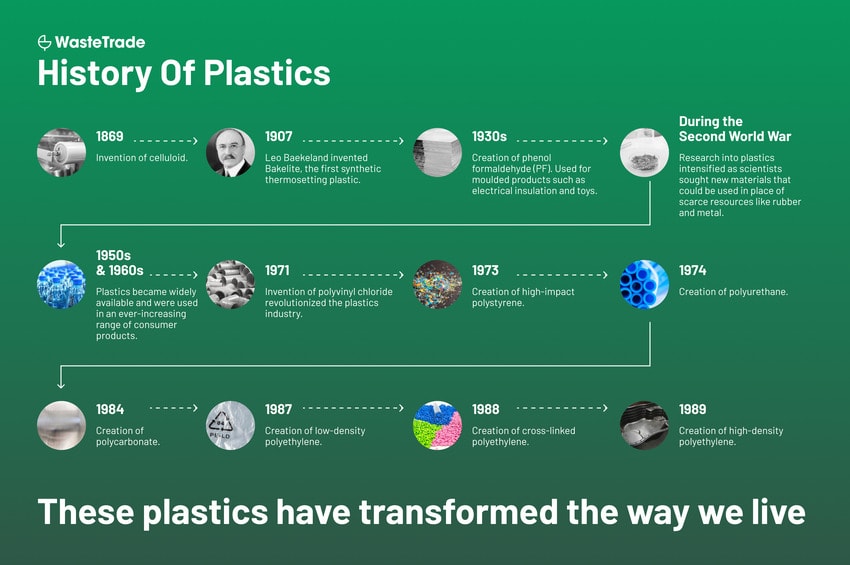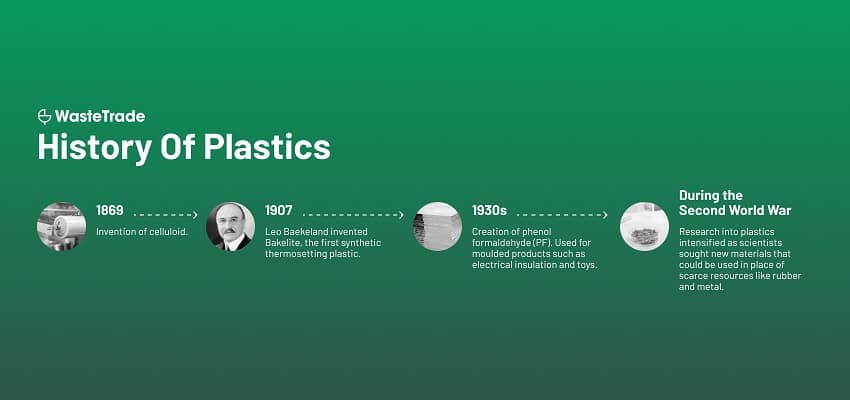Історія пластмас

Plastics are a group of man-made materials that have been engineered to resist degradation from ultraviolet radiation, heat, water and chemicals. They are used in everything from food упаковка і медичний implants to aircraft parts and будівництво materials. But while plastics have many applications, they also have a major drawback: they do not biodegrade. This means plastics can last for centuries in the natural environment; therefore, plastic is one of the most problematic materials when it comes to pollution in our oceans and landscapes.
The history of plastic begins with the invention of celluloid in 1869. Celluloid was the first synthetic plastic and was made from cellulose, a natural polymer found in plants. In 1907, Leo Baekeland invented Bakelite, the first synthetic thermosetting plastic. Bakelite was made from coal tar and used in a variety of applications including billiard balls, radios and electric plugs. Other early plastics included phenol formaldehyde (PF) resins, which were developed in the 1930s and used for moulded products such as електричний insulation and toys.
During the Second World War, research into plastics intensified as scientists sought new materials that could be used in place of scarce resources like rubber and metal. This led to the development of polyethylene (PE), polyvinyl chloride (PVC), polystyrene (PS) and many other plastics. In the 1950s and 1960s, these plastics became widely available and were used in an ever-increasing range of consumer products.
Today, there are more than 50 different types of plastic. They are classified according to their chemical structure and properties. The most common types of plastic are:
- Polyethylene (PE): The most widely produced plastic in the world. Used in everything from shopping bags to food packaging.
- Polypropylene (PP): Used in food packaging, reusable containers, car parts and industrial fibres.
- Polystyrene (PS): Used in Styrofoam cups, egg cartons, meat trays and packing peanuts.
- Polyethylene terephthalate (PET): Used to make water bottles, cooking oil bottles and soft drink bottles.
Who Invented Plastic?

The history of plastic begins with the invention of celluloid in 1869 by John Wesley Hyatt. Celluloid was the first synthetic plastic and was made from cellulose, a natural polymer found in plants. In 1907 Leo Baekeland invented Bakelite, the first synthetic thermosetting plastic. Bakelite was made from coal tar and used in a variety of програми including billiard balls, radios and electric plugs.
Invention of Plastic

Plastics have become an essential part of modern life, thanks to the ingenuity of inventors who pioneered the development of synthetic materials. In 1869, John Wesley Hyatt invented celluloid, the first synthetic plastic. His invention had a profound impact on the manufacturing of a wide array of consumer goods, from photographic film to billiard balls.
Decades later, in 1907, Leo Baekeland invented Bakelite, the first synthetic thermosetting plastic. Baekeland’s breakthrough led to the creation of a wide range of products, including electrical insulators, telephone casings, and kitchenware. These two pioneering inventions paved the way for a series of ground-breaking discoveries in the history of plastic, including полістирол in 1937, поліетилен by Karl Ziegler and fiberglass by James Wright, both in 1938, and поліпропілен in 1951.
Other notable contributions to the world of plastics include the invention of acrylic by German chemist Otto Rohm in 1931 and the development of urea-formaldehyde in 1940. In 1971, the invention of polyvinyl chloride revolutionized the plastics industry. This was followed by the creation of high-impact polystyrene in 1973, polyurethane in 1974, полікарбонат in 1984, linear low-density polyethylene in 1987, cross-linked polyethylene in 1988, and high-density polyethylene in 1989.
These plastics have transformed the way we live, work, and play, and they continue to inspire new advancements in the field of materials science.
